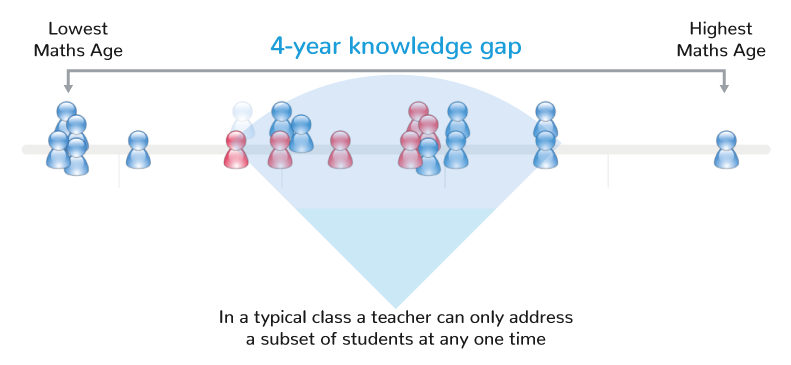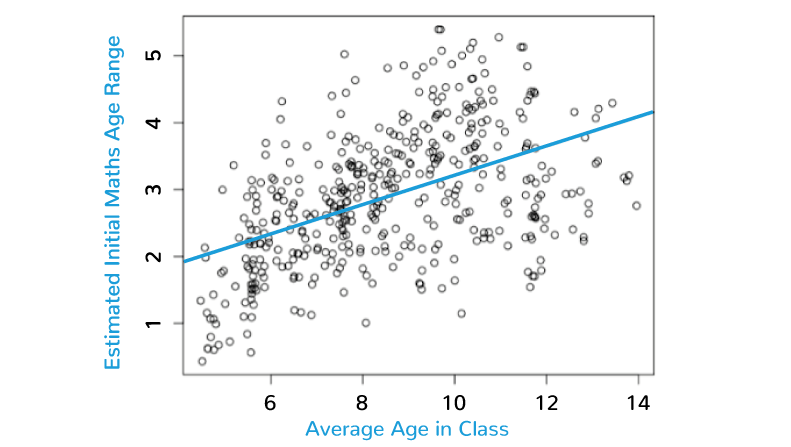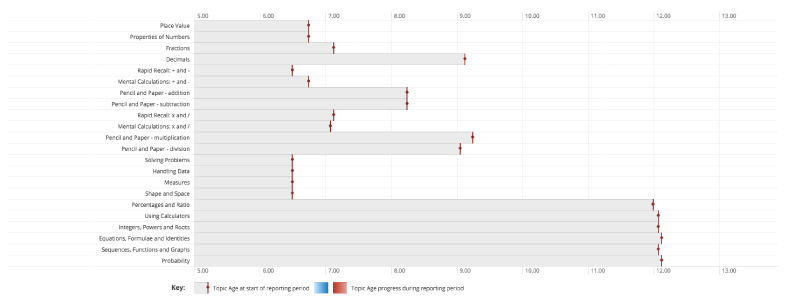Whizz Education was founded on the belief that every child deserves a learning experience that caters to their individual needs and pace of learning. It sounds so simple, but the belief takes on major prominence when we consider the challenge faced by mathematics teachers everywhere. That challenge looks something like this:

What you’re seeing here is the spread of learning needs that persists in a typical maths class. Each icon represents a single student, and the scale plots their overall maths knowledge. So if this is a ‘Standard 4’ (or Year 4/4th Grade) class, then in a simple world, all the students are homogenous and they possess the knowledge level expected of a Standard 4 student, clustering around a single point.
As any mathematics teacher will attest to, education is a little more complicated than that. When we started to analyse learning data that emerged from the Maths-Whizz virtual tutoring system, we observed a spread of learning needs in classrooms, with several years of learning separating the highest and lowest attainers in a given class. The following chart maps a representative sample of 400 UK classrooms on Maths-Whizz, showing the average age against the average range in Maths Age for each class. It puts numbers to what every teacher already knows: by upper primary, a 4-year gap has developed in many classrooms.

The knowledge gap widens as students get older. It stands to reason: mathematical knowledge is cumulative, so small gaps that appear early on in students’ learning, inhibit them from understanding more advanced concepts that depend on them. When all students are expected to move through the curriculum at the same pace, the achievement gap inevitably increases.
Our live reporting data extends this observation to each of the territories Whizz operates in. The multi-year knowledge gap has revealed itself in all learning environments – private schools and public, rural communities and urban, classes small and large.
The picture becomes even more complicated when we probe students’ individual profiles:


Here you can see the learning profile of two (real) students in the same classroom following their initial assessment on Maths-Whizz. They possessed similar overall knowledge in mathematics (measured by Maths Age), but with vastly different learning profiles. The first student was lagging behind in Mental Calculations, the second student in Place Value and Properties of Numbers. In a class of thirty students. you will find thirty distinct learning profiles, or if you are one of the teachers we work with as part of the iMlango project in Kenya, you will find upwards of one hundred. All students share one common trait: a jagged learning profile that reflects their individual strengths and weaknesses across topics.
Making good on that core belief – addressing every child’s individual needs – can seem insurmountable in the face of such diversity. It certainly cannot be achieved by traditional approaches such as three-way differentiation, where students are labelled as high, medium or low ability and segregated accordingly. Our learning data shows that at any moment in time, every student has knowledge gaps that need to be attended to.
That recognition is the imperative of individualised learning, and it underpins Whizz’s approach to both product and implementation design. What we must strive for is to systematically address every student’s knowledge gaps, however nuanced they may be, and support them with a rounded learning profile that sets them up for success.
